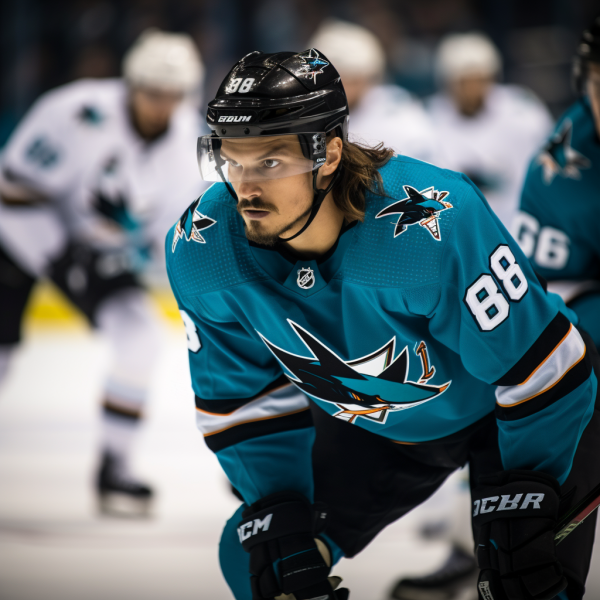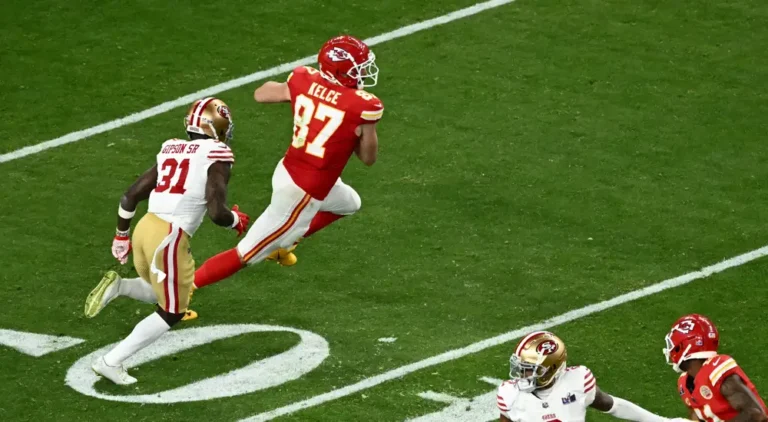Erik Karlsson trade fallout: On the Sharks’ suspect return, filling the void, and how the prospects are affected

Mike Grier, general manager of the San Jose Sharks, was put in a difficult situation, but he remained patient when it came to trading superstar defenseman Erik Karlsson.
Karlsson, who preferred to play for a contender rather than the Sharks, was traded to the Pittsburgh Penguins on Sunday in a multi-player, three-team deal that took months to complete.
Forwards Mike Hoffman and Mikael Granlund, as well as defenseman Jan Rutta, are returning to the Sharks, adding depth to the team. In the case of Hoffman, who is entering the final year of his contract, the Sharks now have another possible chip to play with as the trade deadline approaches next season.
“There were a few times maybe where we were starting to make progress (on a trade), and something would happen and we’d take a step back and not be able to do it,” Grier said of the exhausting ordeal. “But I think it was necessary to have a little bit of patience and get a deal that we’re pretty happy with.”
While the NHL players coming to San Jose are valuable, the biggest benefits of this trade to the Sharks will not be felt for a few years.
The Sharks kept only $1.5 million of Karlsson’s onerous contract, which has an annual value of $11.5 million for the next four years. While the contracts of Hoffman, Granlund, and Rutta consume all of the $10 million in savings – and then some – the Sharks will save $2.5 million in 2024-2025 and $10 million in each of the next two seasons, according to PuckPedia.
That’s significant for a Sharks team that should be coming out of its rebuild around that time, with top prospects gaining valuable experience in the interim.
The Sharks also received Pittsburgh’s top-10 protected first-round pick for next season, giving them four picks in the first two rounds of the draft.
Some observers – quick to hand out tradegrades felt the NHL players the Sharks received would be ineffective in the short term. That’s understandable. They’re all in their thirties, and their prime is likely over. Any future trade returns for them may be minimal.
However, a Karlsson trade was never going to be solely about those individuals. It was going to be about putting the Sharks in a better long-term position to succeed. Nobody expected San Jose to make the playoffs next season, either before or after a trade.
Grier was put in a difficult situation for the second year in a row when another elite defenseman with trade restrictions wanted to leave San Jose. So, regardless of how Granlund, Hoffman, or Rutta perform, Grier received a first-round pick and tens of millions of dollars in future cap space.
Grier wished Karlsson well as the three-time Norris Trophy winner heads to Pittsburgh to compete for the Stanley Cup with the Penguins. In San Jose, the plan is to do the same — in a few years.
Who can fill Karlsson’s shoes?
The Sharks do not have anyone on their roster who can come close to Karlsson’s 101 points from last season. In fact, the eight defensemen who appeared in at least one Sharks game in 2022-23 and are still on the team have a combined total of 69 points.
This past season, Karlsson had points on 43.35 percent of the Sharks’ 233 goals, led the top power-play unit, and averaged nearly 26 minutes of ice time per game.
That’s a big hole to fill, so the forwards must contribute more points. Last season, Hoffman and Granlund combined for 75 points, and newcomer Anthony Duclair is expected to see time on the top line. Tomas Hertl, Fabian Zetterlund, and Oskar Lindblom could all have breakout seasons for the Sharks.
“I would say it’ll definitely be more of a committee thing than relying so heavily on one guy to drive the offense,” Grier said. “At times, that was the case last year.”
What happens to the children?
The Sharks currently have 13 forwards and seven defensemen on one-way contracts, which may not leave much room for waivers-exempt players like forwards William Eklund and Thomas Bordeleau, as well as defenseman Henry Thrun, to make the 23-man roster out of training camp.
The additions of Duclair, Hoffman, and Filip Zadina, along with Zetterlund, Alexander Barabanov, Kevin Labanc, and Jacob Peterson, make for a crowded winger group. Is a Bordeleau pushed out if Granlund is used as a third-line center and Nico Sturm returns to the fourth line?
On defense, Thrun will almost certainly have to compete with Jacob McDonald, Radim Simek, or Nikolai Knyzhov for a spot on the opening night roster. Leon Gawanke, an offensive-minded player, will also be in the mix.
Whatever the coaching staff decides, Grier stated that if the younger players have good camps, the Sharks will make room on the 23-man roster for them.
“These guys, they have to take the job,” Grier explained. “We’re not going to hire them based on their prospect pedigree or draft position.” They must come to camp and take the veteran’s job, and the veteran must do everything in his power to keep the job. That will be the focus of camp.
“There will still be plenty of opportunities for the guys to earn a spot on the team, and it will be up to them to demonstrate that they are ready to take the opportunity.”



